“The bad news is that if history teaches us one thing, it is that there never has been an energy transition… The history of energy is not one of transitions, but rather of successive additions…” Bonneuil and Fressoz, The Shock of the Anthropocene.
The New Deal and World War II are reminders of past transformative times, reverberating in current severe hardships and extreme dangers. Emergencies can bring clarity and reason about what to do, though at the opposite end, crises can elicit the worst outcomes, such as outlined by Naomi Klein in The Shock Doctrine. There are historical precedents for rational and responsible responses to emergencies, yet a range of measures that could immediately cut emissions, including non-tradable rationing of de-commodified energy and moratoriums on specific high-emitting sectors, are largely ignored in climate policy, including the Green New Deal and other climate justice platforms.
Is it accurate to call climate change an ‘emergency’? Fascism was seen as an emergency requiring urgent systemic changes, and it is arguable that climate change, caused and driven by capitalism (and its elaboration under neoliberalism), threatens far more lives than fascism. The careful research of historians Jason Moore, Andreas Malm, and others, show that modernity could have taken a very different path in terms of social organization and sources of energy.
Is it clarifying to understand global capitalism as a totalitarian organization in which the ‘full spectrum’ of Earth and its atmosphere are privatized, in which reductionistic science characterizes humans as genetically capitalistic and incapable of socially responsible behavior, and in which public knowledge about the unprecedented perils to human beings is systemically blocked?
The following article first focuses on the climate and on the underestimations of the magnitude of climate change mechanisms and its human impacts. Rationing and moratoriums are then discussed as strategies for immediate substantial reductions of greenhouse gases (GHG). The last section focuses on political action and implementation.
Human Fatalities
Typically, addressing the environmental and social crises is posed primarily as a problem of how to provide a liveable economy instead of a problem in addressing the loss of human life. This contributes, intentionally or inadvertently, to not understanding the extremity of the human situation brought about by the intersection of the climate system and the capitalist economy. The exact point of political possibility and knowledge in 1990, with the end of the Cold War and the certainty of anthropogenic climate change, engendered the “great acceleration” of all high-emitting economic sectors and ever-amplifying climate feedbacks, now rapidly driving the climate to a runaway state in which it will be too late for human interventions to alter the physics, biology, and biochemistry of the climate system.
Current reports are awakening an urgent climate movement, but the questions raised in this article are what replaces capitalism, how to urgently eliminate GHG emissions, and whether the new green plans, though a remarkable advance, are dangerously inadequate in scope.
Climate
What does ‘urgency’ mean – what are the effects of delaying greenhouse gas (GHG) elimination? The following selection of reports convey how climate is a complex interactive system that is already irreversibly altered by the incoming energy from the sun.
The October 2018 IPCC report warns that we have only 12 remaining years to cap temperature rise at 1.5C. Many scientists point out the very conservative nature of IPCC projections, partly due to data omissions in some climate models (e.g., omitting the extent of Arctic sea ice melt). Paleoclimate research, based on analysis of ice cores and ocean sediments, shows correlations between global surface temperature, sea level rise, and concentrations of CO2 in the atmosphere. Similarly, correlations exist of CO2 levels and temperature with past mass extinction events when the climate at times shifted precipitously and suddenly. In the paleoclimate record, levels of GHG equal to current values led to the disappearance of all Earth’s ice.
Is 1.5C a safe level? By the time of the 2009 Copenhagen climate meetings, eminent climate scientist James Hansen warned that 1C and 350 parts per milliom (ppm) represented the uppermost level to avert catastrophic changes. In 2009, the UN Environment Program predicted a 3.5C increase by 2100 at the 2009 rate of emissions, warning that such an increase would “remove habitat for human beings on this planet, as nearly all the plankton in the oceans would disappear.” In October 2009, the Hadley Centre for Meteorological Research suggested a 4C temperature increase by 2060. In November 2013, the International Energy Agency predicted a 3.5C increase by 2035.
The following paragraph may seem confusing, because it is. In December 2018, with reference to the carbon budget consistent with a 2C rise in temperature, the IPCC increased the allowable amount of CO2 emissions to 1170 Gt CO2 from the earlier budget of 1070 Gt CO2. In February 2019, the IPCC reported that “… increased action would need to achieve net zero CO2 emissions in less than 15 years to keep temperature to 1.5C.”
The idea of a carbon “budget” is itself erroneous, as it ignores the climate system dynamics of amplifying feedbacks and deteriorating carbon sinks, natural systems that absorb and store carbon dioxide. It is not possible to identify and anticipate all the amplifying feedbacks, such as when the shorter winter season led to pine beetles devouring huge swaths of Canadian boreal forest,– decimating the forest carbon sink and turning it into a source of CO2 emissions. What we see presently is the magnitude of change due to a global temperature increase less than 1C, and CO2 concentrations much lower than the current high reading of 417ppm due to delays in the climate system. “After the Scripps monitoring station atop Hawaii’s towering Mauna Loa went online in 1959, CO2 rose around just 0.7ppm per year. Then, in the 1990s, the rate increased to 1.5ppm per year. The last decade has averaged 2.2ppm. Yet, in the last year [2018], there was a 3.5ppm gain.”
The extent of recent accelerated change can be minimized by shifting the baseline of temperature measurement from the beginnings of the industrial revolution (1780) to 1950 or 1990. The methane threat can also be minimized by describing its heat-trapping potential as 25 times that of CO2 when averaged over a 100-year period. However, methane is 84 times more potent than CO2 in the short term, which is what counts in this emergency situation. In 2013, an international research group led by Oxford University scientists found evidence from Siberian caves that a global temperature rise of 1.5 degrees Celsius could cause permanently frozen ground to thaw over a large area of Siberia and could release over 1000 giga-tonnes of the greenhouse gases carbon dioxide and methane into the atmosphere, potentially accelerating global warming.
Around one million animal and plant species are now threatened with extinction, many within decades and at an unprecedented rate in human history. It is now also known that the loss of one species can lead to other species disappearance in a process known as co-extinction, and possibly bring entire systems to an unexpected, sudden shift or total collapse.
Forest fires are more frequent and increasingly intense and long lasting, and the forecast is that the resultant warming soils will emit the immense stores of carbon dioxide that they contain.
There was an unexpected 50% jump in methane emissions from the tropics between 2013 and 2018 compared with the period between 2007 and2012. Methane is also released from wetlands, fracking, livestock (cows), melting permafrost.
The tar sands extraction is another catastrophic factor. Climate scientist James Hansen said that the tar sands meant “game over for the planet,” and it was just reported that tar sands GHG emissions contribute 64% more emissions than previously estimated.
Antarctica is far more sensitive to climate change than originally predicted and is losing ice mass at a rate six times greater than in the 1950s. Current losses are doubling every decade, setting new records for Ocean Heat Content (OHC). The world’s largest ice shelf in Antarctica is melting 10 times faster than the overall average rate of melt.
Oceans Melting Greenland reports that warmer Arctic air and ocean temperatures are increasing the melting of Greenland’s ice sheet. On June 18, record-setting ice melt and sea ice loss occurred several weeks early resulting in “Greenland losing 2 billion tons of ice or about 45% of the surface in just one day.”
The decreasing temperature difference between the North Pole and the equator has already altered the jet stream. The Gulf of Mexico is much warmer than usual and is causing more evaporation, which is carried northward by wind currents where it meets hot dry air from the Rockies and cold dry air from the jet stream. This results in a region of increased tornadoes that is now shifting north and east from the traditional “tornado alley.” Over 500 observed tornados were reported this last May in the American Midwest; previously, only four periods in the official database ever exceeded 500 observed tornadoes in 30 days: 2003, 2004, 2008, and 2011.”
Oceans absorb both heat and CO2, and this is causing a decline in phytoplankton, a major source of Earth’s oxygen.
The oceans are also warming about 40% faster than previous estimates, contributing to more powerful storms, more rapid sea level rise, and changes in ocean currents. The proportion of fresh to salt water causes shifts in stratification and decreased circulation of nutrients and oxygen, as is already evident in the rising sea level that is causing salt water incursion into the major food-producing Nile and Mekong deltas where such a loss is critical.
The reporting of human impacts of climate change is highly influenced by politics and social attitudes. At the time of the Pakistan floods in 2009 when 20 million people were displaced, a prominent climate scientist advised students to count monarch butterflies to convince them of climate change. Meanwhile, barely any news has been reported about the failed monsoon in India, affecting 43% of the country.
“The country has seen widespread drought every year since 2015, with the exception of 2017. About 20,000 villages in the state of Maharashtra are grappling with a severe drinking water crisis, with no water left in 35 major dams. In 1,000 smaller dams, water levels are below 8%. The rivers that feed the dams have been transformed into barren, cracked earth. Groundwater, the source of 40% of India’s water needs, is depleting at an unsustainable rate… Twenty-one Indian cities – including Delhi, Bengaluru, Chennai and Hyderabad – are expected to run out of groundwater by 2020, and 40% of India’s population will have no access to drinking water by 2030, the report said.”
While there is little representation of the devastating effects on people’s lives, NATO and the US military designate climate as a “threat multiplier.” The Quadrennial Defense Review, issued in 2014, defines climate-related threats: “These effects are threat multipliers that will aggravate stressors abroad such as poverty, environmental degradation, political instability, and social tensions – conditions that can enable terrorist activity and other forms of violence.” The 2003 Pentagon Report projects “‘no-regret (military) strategies’ for worst case, global warming-induced eventualities.”
“No regret,” as defined by the Rand Corporation, means that the military must be well prepared for threats so that outcomes will not lead to regrets. Note the recent history of UN forces providing security: in Haiti where UN Peacekeepers caused 9500 deaths from cholera, in the Central African Republic where UN Peacekeepers were involved in sexual exploitation and abuse, in Nepal where UN peacekeepers caused 9000 cholera deaths. There are many non-military solutions to providing security.
Causes of actual human fatalities related to climate change include extreme weather, high temperatures that are not survivable, food and water shortages, the spread of disease pathogens, and the militarization of climate “security” and of borders. Monbiot reported 15,000 child fatalities due to the burning of Indonesian tropical forests for biofuel plantations (ironically, often earning carbon credits). Fatalities in California wildfires were compounded by class-based inequalities in zoning, austerity-based public defunding of fire departments and the exploitation of prisoners as firefighters. Nevertheless, it is only recently that the IPCC formed a working group on the human situation. In 2009, the Global Humanitarian Forum was already reporting the loss of 300,000 people per year due to climate change
Innumerable everyday examples could be cited of how the lived reality of the human situation and the sense of connection to other people are minimized by media and political interests.le. For example, while people are starving due to the confluence of drought and Cyclone Idai in Zimbabwe, Mozambique, and Malawi, and survivors can wait four hours for a bag of maize meal, the New York Times climate report featured, of all things, the food editor: “The climate is changing. And a lot of home cooks have been left paralyzed at the stove or in the marketplace as a result, choosing between the farmed salmon and the pasture-raised chicken, the organic tofu, the fair-trade coffee, the heritage carrots.” These tragedies in Africa should not be a surprise and were anticipated. In 2009, lead G77 negotiator Lumumba Di-aping, with tears rolling down his face, declared that delegates “have been asked to sign a suicide pact that would cause certain death for Africa, …a type of ‘climate fascism’ imposed on Africa by high carbon emitters.” In 2011, Nigerian climate delegate Nnimmo Bassey said that official climate inaction was a death sentence for Africa, and he linked the extraction of slave energy with the extraction of oil: “We thought it was oil/But it was blood.”
The human side is abstracted even by the language used when we hear about the loss of the “planet” and of “organized civilization,” and of polar bears (In early childhood, attachment to soft furry animals precedes the capacity to have a constant sense of another person). The enclosure of the commons or the privatization of natural resources, has evolved into monetizing humans and ecosystem services and conferring personhood status to corporations: economist Sir Nicholas Stern defended the expansion of aviation because lengthier waits at airports for the business class leads to a greater economic loss than the climate-caused death of an impoverished person; and Larry Summers wrote that “dumping a load of toxic waste in the lowest wage countries” made great economic sense. Military budgets price what is priceless – human life.
Rationing
As detailed in examples below, solutions to climate change proffered since the 1960s have not worked. An implicit illogic allows for the constant expansion of destructively high greenhouse gas emitters until they can shift to renewables. Virtually ignored are three high-emitting sectors that are exempt under the Kyoto Accord, all slated for vast expansion in the coming decades and all three not convertible to renewables: the military, international aviation and shipping. Other high-emitters rooted in the economic growth model include the agro-industrial complex; biofuels; extraction of minerals, metals, oil and gas; production of plastic; and the construction industry with its use of energy-intensive steel and cement. Logically, these sectors need to be stringently curtailed or eliminated, first of all, until the basic needs of the world population are prioritized and met without adding greenhouse gases to the atmosphere, secondly, until GHG concentration is drawn down to a safe level, and finally, until these sectors are actually fueled by renewables while fully accounting for externalities and life cycle analysis.
Among the range of solutions, negligible consideration is given to rationing and moratoriums even though these options could substantially cut emissions immediately without requiring new technologies. Since the 1960s, the focus has been on transitioning to renewables, with far less attention to the actual uses of energy and possible areas of elimination or moratoriums.
The rationality of rationing is readily apparent in times of extreme life threats. There are historical precedents to examine that can be helpful in preventing inequitable implementation and ensuring efficacy.
In his book Late Victorian Holocaust, Mike Davis describes life-saving rations used during the 1743-44 famine in the north China plain that devastated the winter wheat crop. When farmers died in their fields due to heat stroke, mass mortality was averted by the skilled Confucian administration of Fang Guancheng, the agriculture and hydraulic expert who directed relief operations. The renowned ‘ever-normal granaries’ in each county immediately began to issue rations (without any labour test) to peasants in the officially designated disaster counties. Local gentry had already organized soup kitchens to ensure the survival of the poorest residents until state distributions began. When local supplies proved insufficient, Guancheng shifted millet and rice from the great store of tribute grain and moved vast quantities from the south. Two million peasants were maintained for 8 months until the return of the monsoon made farming possible again. In comparison, no contemporary European society guaranteed subsistence as a human right to its peasantry nor could any emulate ‘the perfect timing of [Guancheng’s] operations. Guancheng “tended to give top priority to investments in infrastructure” and to “principles of disaster planning and relief management.”Contemporary Europeans were dying in the millions from famine and hunger-related diseases following Arctic winters and summer droughts. This compares with a conservative estimate of 50 million deaths in China under British control during the droughts of 1876-79 and 1896-1900, and in 1958-61, under Mao’s “monstrous mishandling” of agriculture during the Great Leap Forward [An unfortunate historical amnesia is the naming of Canada’s progressive climate movement “The Leap”).
In contrast, even before the US entered WWII to fight against the threat of fascism, the public was prepared for possible rationing. First rationed were rubber tires. Soon after, a moratorium was imposed on car manufacturing. A national speed limit of 35 miles per hour (56 km/h) was imposed to save fuel, and gas was distributed on the basis of need, prioritizing essential services. “As of 1 March 1942, dog food could no longer be sold in tin cans, and manufacturers switched to dehydrated versions. As of 1 April 1942, anyone wishing to purchase a new toothpaste tube, then made from metal, had to turn in an empty one. By June 1942 companies also stopped manufacturing metal office furniture, radios, phonographs, refrigerators, vacuum cleaners, washing machines, and sewing machines for civilians.”
Stan Cox provides a particularly helpful analysis of rationing in the UK and US from WWII to the present. Rationing by quantity, combined with price controls, was broadly supported by the public, finding these the better way of ensuring that true needs are met when there is a situation of broad inequality. “As the United States shifted from a Depression mind-set into world war gear, a large slice of the population remained poor, and the equal shares aspect of rationing together with controls on prices and the rapid creation of well-paying wartime jobs, tended to boost the real incomes of working class Americans.” He wrote that people are more receptive to rationing when it is a response to a crisis. In fact, in August 1942, “when only a limited number of items were being rationed, a poll found 70% of respondents feeling they had not been asked to sacrifice enough,” and a later poll indicated that the majority of people felt that the government should have acted faster in rationing scarce goods. Support for continued price controls remained strong after the war. In Britain, demand swelled for “all around rationing.” In both the UK and US, the day-to-day management of rationing systems was handled at the local level. “The block leader, always a woman, would be responsible for discussing nutritional information and sometimes rationing procedures and scrap drives with all residents of her city block.”
Rationing was also adaptable to special needs, such as those of pregnant women and children who received extra shares of milk and of foods high in vitamins, while farmworkers and others who did not have access to workplace canteens at lunchtime received extra cheese rations. The government response changed based on what people demanded. Cox quotes Fred Magdoff, co-author with John Bellamy Foster of What Every Environmentalist Needs to Know about Capitalism, who predicts that rationing will very likely be necessary in any future economy that takes the global ecological crisis seriously. Rationing by quantity rather than ability to pay “makes sense if you want to allocate fairly. It’s something that will have to be faced down the line. I don’t see any way to achieve substantive equality without some form of rationing… [but] there’s a problem with using that terminology. There are certain ‘naughty’ words you don’t use. ‘Rationing’ is not considered as naughty as ‘socialism,’ but it’s still equivalent to a four-letter word” (p. 64).
Rationing can be authoritarian, as in Israel’s strangulation of all supplies going into Gaza, to the point of even regulating caloric intake! In contrast, the work of Stan Cox describes highly participatory and community-based rationing. One precondition of rationing and moratoriums could require free, prior and informed consent, modelled on the UN Declaration on Indigenous Rights.
Moratoriums
Ecosocialist Ian Angus provides a brilliant example of the utility of both rationing and moratoriums: Ira Rennert, a criminally neglectful magnate from the high-emitting extraction sector is obscene in his consumer life style, but as a capitalist, his mines cause 85 times more arsenic, 41 times more cadmium and 13 times more lead than is safe; 99% of children tested in proximity to his Peruvian mine had blood-lead levels that vastly exceeded WHO limits. Real climate action would entail rationing his personal energy use. Non-tradable rationing would allow him to heat or cool one bedroom and one bathroom out of the 25 of each in his primary estate. A moratorium would shut down the mines: mining destroys the soil and forest carbon sinks, and degrades water. Under a just transition, his other properties could be re-distributed to people in need of housing under a humane application of eminent domain. Lennart’s life style clearly reflects the reasons that the current housing crisis is severe and global and is a product of both climate-caused disasters and the far-reach of the invisible hand of capitalism.
High-emitting sectors continue to expand despite extensive legal challenges, strategic alliances, persistent community activism, political promises, scientific corroboration and international support. Power and wealth overrode opposition at Standing Rock, the Trans Mountain pipeline, and the Narmada Dam in India. The Nation (04/01/19) and Guardian Weekly recently reported an extensive study by the Centre for International Environmental Law (CIEL) about petroleum companies’ $65-billion investment in plastics production, involving ExxonMobil and Saudi Basic Industries Corporation. More than 333 petrochemical projects are underway or newly completed in the US. The CIEL report indicates that the entrenchment of fossil fuels in the plastic production process will be hard to overcome by renewables. The waste will be sent to developing countries. Small US communities were not informed about takeovers and have no say about the new industrial zones that are polluting water and air with a range of toxic compounds. Externalities include 20 to 25 million gallons of water per day required by the “‘cracker’, a facility that uses heat and pressure to crack apart molecules of ethane gas…”
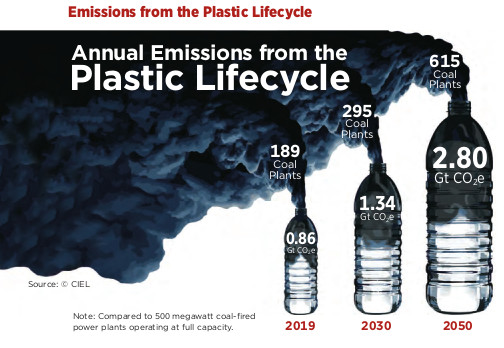 Greenwash abounds. These same corporations announced the Alliance to End Plastic Waste with an initial commitment of $1-billion. In England, the environment secretary announced a phase-out of plastic straws by 2020 to “ensure we leave our environment in a better state for future generations.” Greenwashers literally grasp at straws. Canadian Prime Minister Trudeau just announced a phase-out of single-use plastic by 2021, while at the same time, approving the Trans Mountain pipeline expansion project. Stopping the production of plastic straws and single-use plastics is not enough. Plastic at the ocean’s surface releases methane and other greenhouse gases, and these emissions increase as the plastic breaks down further. “Microplastic in the oceans may also interfere with the ocean’s capacity to absorb and sequester carbon dioxide.”
Greenwash abounds. These same corporations announced the Alliance to End Plastic Waste with an initial commitment of $1-billion. In England, the environment secretary announced a phase-out of plastic straws by 2020 to “ensure we leave our environment in a better state for future generations.” Greenwashers literally grasp at straws. Canadian Prime Minister Trudeau just announced a phase-out of single-use plastic by 2021, while at the same time, approving the Trans Mountain pipeline expansion project. Stopping the production of plastic straws and single-use plastics is not enough. Plastic at the ocean’s surface releases methane and other greenhouse gases, and these emissions increase as the plastic breaks down further. “Microplastic in the oceans may also interfere with the ocean’s capacity to absorb and sequester carbon dioxide.”
The highly touted levies by British Columbia and Australia of a carbon tax deflected attention from the simultaneous expansion of coal mining for shipping to China for manufacturing steel, much of it exported. Again, carbon taxes are not enough. High-emitting coal, shipping and steel manufacturing rationally require moratoriums.
Instead of a moratorium on car manufacturing and investment in free public transit and in reorganizing densely populated areas so that food and other essential goods are nearby, one of the highly acclaimed recent solutions is the electric car. Externalities and life-cycle analysis of electric vehicles includes large amounts of plastic in the car’s body, mined materials (and ruined ecosystems, usually in least developed countries), data centre emissions, water required in the manufacturing process, the source of energy for charging batteries, plus the car infrastructure of streets and roadways that pave over a great deal of fertile agricultural land. Another important fact to keep in mind is the cost when the majority world population cannot even afford indoor toilets.
After the calamities of two world wars in the 20th century, the extant nations agreed to “end the scourge of war,” but now, at the most dangerous time in human history, dismantling the military, or even placing a moratorium on the military-industrial-financialization complex, seems risible and is still not addressed in any climate discourse. The military is exempt from the Kyoto Protocol, and it is the single largest emitter of greenhouse gases. Estimates of military emissions are based mainly on battle machinery and infrastructure – its aircraft and aircraft carriers, its domestic and foreign military bases. It is difficult to know if calculations also include life-cycle analysis of the manufacturing process itself and the procuring and processing of materials. Emissions could also include the enormous energy requirements of the military’s data centres as well as its wholesale defoliation of Vietnam, Cambodia, Laos, and North Korea. The military, like so many high emitting sectors, continues to expand in globalized walled militarized borders. Security in densely populated areas is modelled on Israel’s battle-tested strategies, weaponry, and surveillance technology. The Chinese Belt and Road project, together with emerging Middle East alignments, crisscross Eurasia and parts of Africa with military installations along the enormous coal/oil/gas infrastructure.
US-NATO wars are fought for oil and dominance. The US Department of the Navy released a 36-page document in 2009 called Navy Arctic Roadmap. “The United States has broad and fundamental national security interests in the Arctic region and is prepared to operate either independently or in conjunction with other states to safeguard these interests. These interests include missile defense and early warning, deployment of sea and air navigation, and overflight.” They also comprise secure US sovereign rights over extensive marine areas, including the valuable natural resources they contain. “What the practical implementation of this policy means is the expanded penetration of the Arctic Circle by the US Navy’s submarine-launched ballistic missile (SLBM) third of the American nuclear triad… and the extension of plans for a US-NATO Asian-NATO worldwide interceptor missile system already being put into place near Russia’s western, southern and eastern borders. US and NATO radar submarine and missile deployments in the so-called High North will complete the encirclement.”
Proposed moratoriums on other large GHG emitters have not been implemented: on fracking, hydroelectric dams, biofuels. Several years ago, George Monbiot reported that up to 15,000 children in Indonesia died as a result of the burning down of tropical forests to make room for biofuel plantations. Meanwhile, the biofuel alternative to fossil fuels was a major cause of high food prices in the 2008 economic crisis: “On July 3, 2008, the Guardian came out with an expose on a secret report made by a World Bank economist that claimed that US and EU agrofuels policies were responsible for three-quarters of the 140 percent increase in food prices between 2002 and February 2008.”
Changing the System
The US Green New Deal aims for a 40% to 60% reduction by 2030 below the 2010 baseline when GHG concentration was 386.6ppm. The Kyoto agreement called for (voluntary) cuts of approximately 6% below the 1990 baseline level when GHG concentration was 354.29ppm. At the current rate, 12 years will add 36ppm, bringing concentration to 453ppm – and with feedbacks, a great deal higher. 350ppm CO2 is considered the safe level, and the current reading is 417ppm. The pace of additions continues to increase because of feedbacks and because of the vast expansion of fossil fuel use. Global CO2 emissions rose 60% between 1990 and 2013, increasing from 22.4 billion metric tons in 1990 to 35.8 billion in 2013.
To paraphrase Yeats, all must change, change utterly. It is unlikely that what is required will be implemented unless people truly comprehend that collapse is inevitable under the current system, that collapse means massive loss of human life in a world in which public services have been dismantled under austerity regimes, and a world in which untold numbers of people are prevented from crossing borders. What was significant in WWII was the rapidity of radical transformation of the use of energy and the distribution of basic goods. The WWII economy shifted manufacturing to the war industries. The task is obviously the opposite at this point as the military, the capitalist system, and the life cycle and externalities of industrialization are destroying the habitable environment.
It is hard to see how things can utterly change if people are treated as if they are unable to know, much less to plan together. What is required here is radical system change. What is unique is that it requires the complete and immediate elimination of the core source of energy on which the capitalist system depends. There are two polarities for conceptualizing how to attack this system. First, across the world people are fighting against institutions one-by-one: the corporations, banks, international financial institutions, pension-fund boards, the complicit legal apparatus, trade agreements, corporate-dominated higher education, major media, the military/industrial complex, and closed borders. This includes a significant shift to thinking in terms of the commons, as reflected in the demands for free public transit and free internet access. A second revolutionary path involves workers taking over the means of production and setting up a radically different system based on de-monetizing energy and managing energy as a commons. It is workers who know how the energy system functions – who mine and extract, who turn off valves, who fix equipment, who know how to program and distribute energy. All these actions are supported by laws and norms, including the “necessity defense” and the UN Declaration on civil, political, social and economic rights.
Past and present, people act responsibly and against all odds when they organize: military mutinies,dockworkers who refuse to unload military weapons, the Gaza Great March of Return, prison strikes, protesting against dams, protesting against plastics in Cancer Alley and Chemical Valley. There is a long history of communities deciding how to ration the resources of the commons to meet needs.
All sources of GHG emissions require transformation and the hard work of analysis and collaboration. A comprehensive article in Jacobin Magazine on food and agriculture reviews American farm policy from the first New Deal to the present Green New Deal. It concludes:
“Better living through farming can’t happen without canny political alliance-building, stitching together a bloc that addresses hunger, poverty, malnutrition, and inequities in wealth and wages, both in the countryside and city. The logic of building a counter-hegemonic bloc demands a militant rural presence.”
The Left would do well to follow the path of Meyer Brownstone in directly meeting with people. He was an advisor to Tommy Douglas, former Chair of Oxfam Canada, and specialized in agroecology. He met with rural farmers all over Saskatchewan to hear their views on farming, land distribution, and government. It is crucial at this time of unimaginable threats to the world food supply to not repeat the agriculture practices of the late Victorian holocaust, of Mao, Stalin, Borlaug’s green revolution, and the US agro-industrial complex.
The 21st century is at this point a Tale of Two Extreme Worlds, where eight men hold as much wealth as half the world population. “If we measure poverty by the more accurate $5/day line, the total poverty headcount rises to 4.3 billion people, more than 60 percent of humanity. That’s 370 million more people than in 1990.” Two billion people still do not have basic sanitation facilities such as toilets or latrines. Globally, at least 2 billion people use a drinking water source contaminated with faeces. In least developed countries, 22% of health care facilities have no water service, 21% no sanitation service, and 22% no waste management service. The urgent work is to provide housing, ecosystem restoration, fossil fuel-free agriculture (which will require up to four times more human labour than the current agro-industrial system), and the work of uniting and organizing global opposition to the hegemonic power and ideology that is leading to the “end of history.”
The Greens have a mixed history, including Malthusians, displacement of large indigenous populations to make way for pristine retreats, and the Canadian Boreal Initiative negotiated by big forestry and ENGOs without any indigenous participation. Canada’s Green Party platform promises to “use only Canadian fossil fuels,” including upgrades to “turn Canadian solid bitumen into gas, diesel, and other products providing jobs in Alberta.” [!] The Green New Deal, Extinction Rebellion and the Leap are far-reaching in their integrating social-economic justice with recognition of the climate emergency and their not compromising on carbon-based fuels. Yet much remains within the frame of “transitioning” – without clear, immediate, mandatory deadlines for GHG reductions and elimination in all sectors. And while there is a focus on publicly subsidized housing, transportation and healthcare, the crux of this crisis is energy and the opening at this time, indeed the necessity, of demonetizing it.
Quoting Filipino delegate Yeb Sano’s plea at the 2013 COP as Super Typhoon Haiyan devastated the Philippines: “Stop this madness!”
*
Note to readers: please click the share buttons above or below. Forward this article to your email lists. Crosspost on your blog site, internet forums. etc.
Judith Deutsch is a member of Independent Jewish Voices, and president of Science for Peace. She is a psychoanalyst in Toronto. She can be reached at [email protected].
Notes
All images in this article are from The Bullet
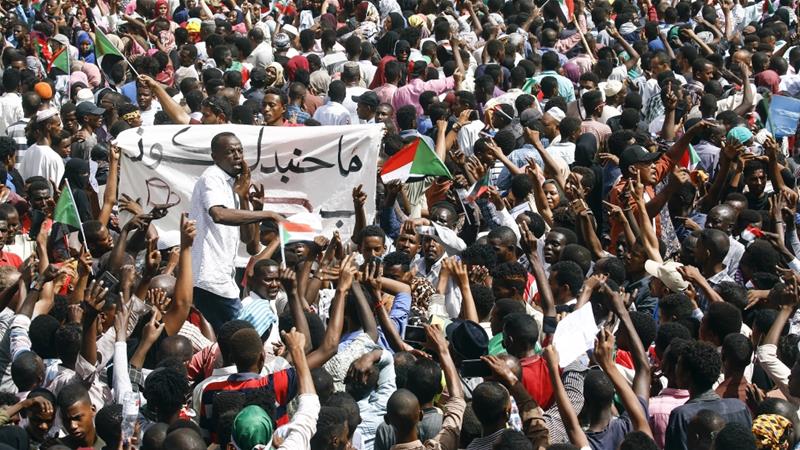
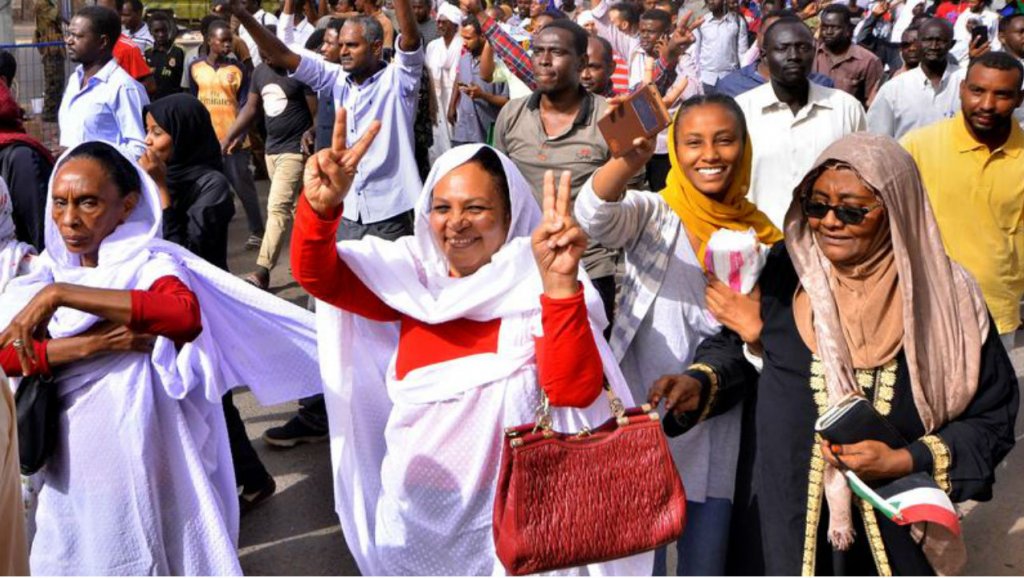


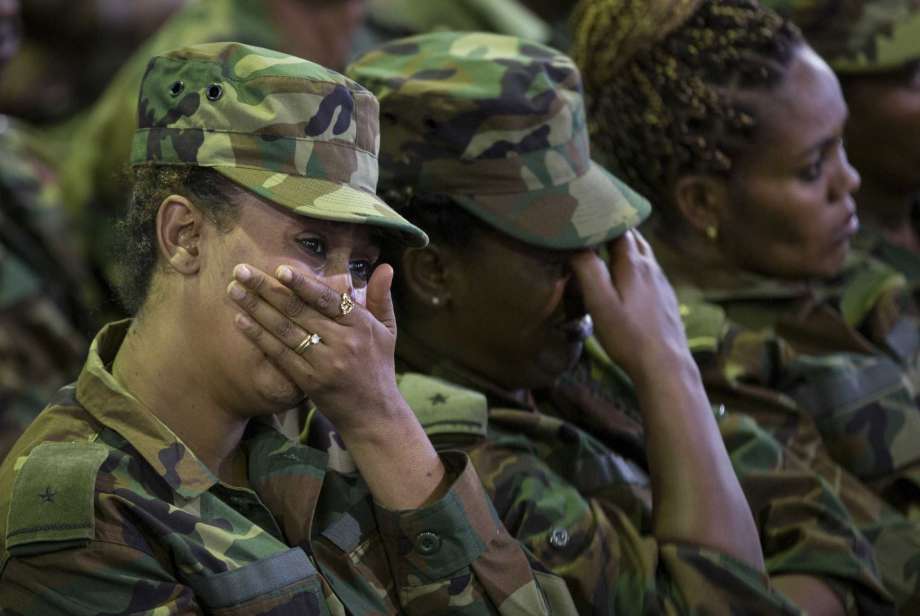

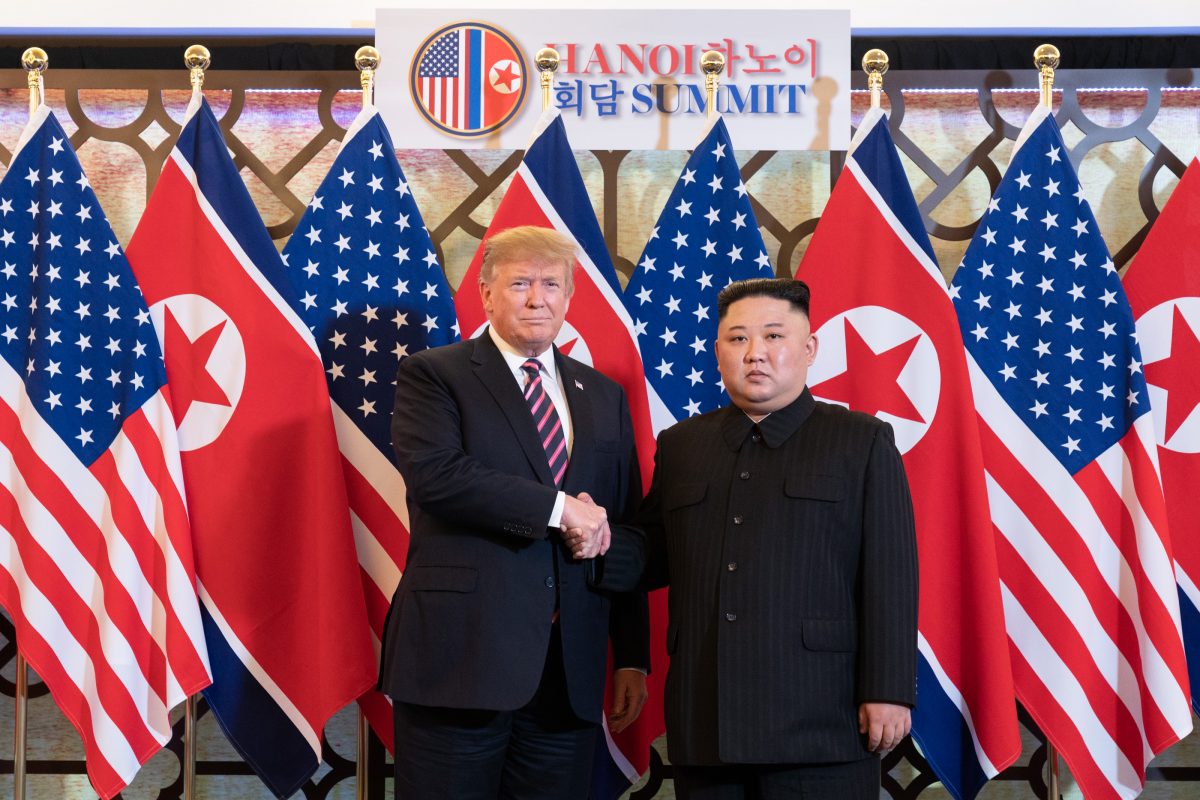

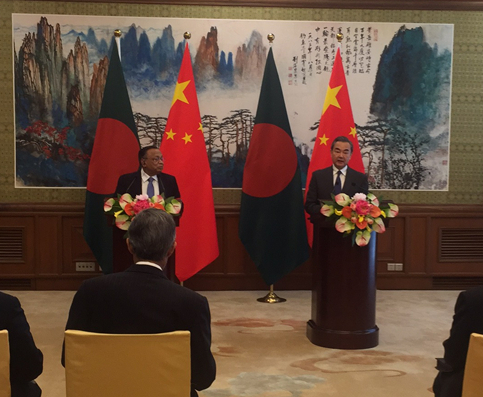
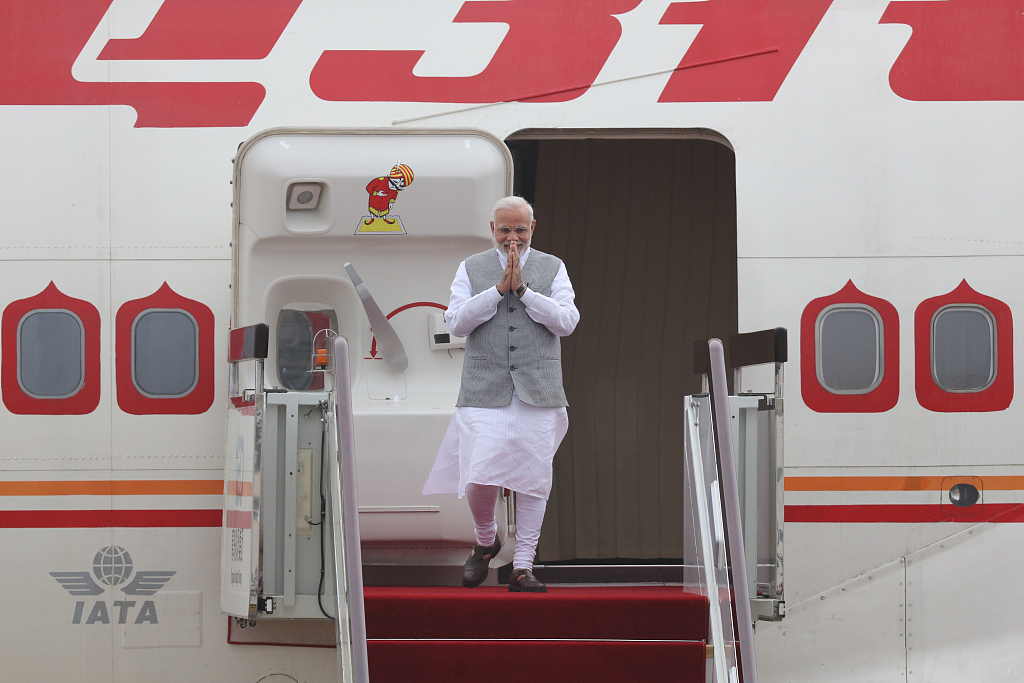





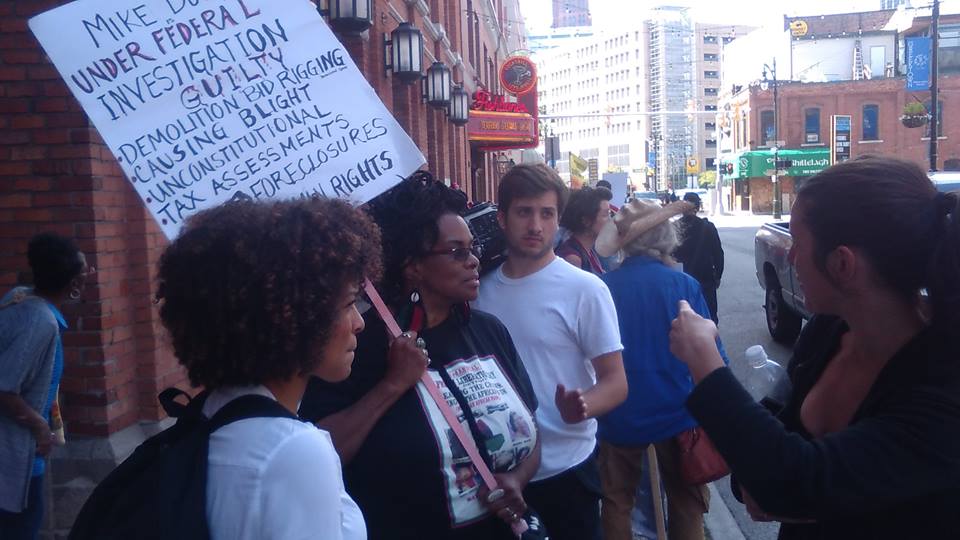

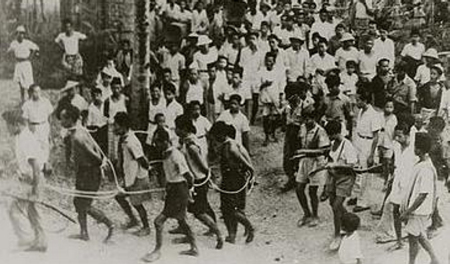



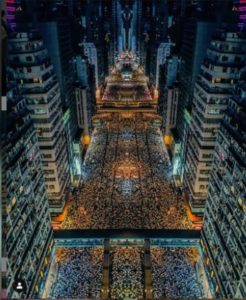






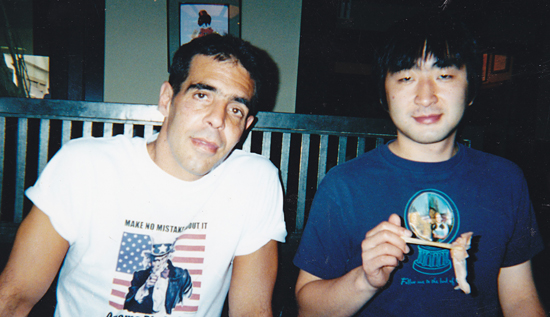
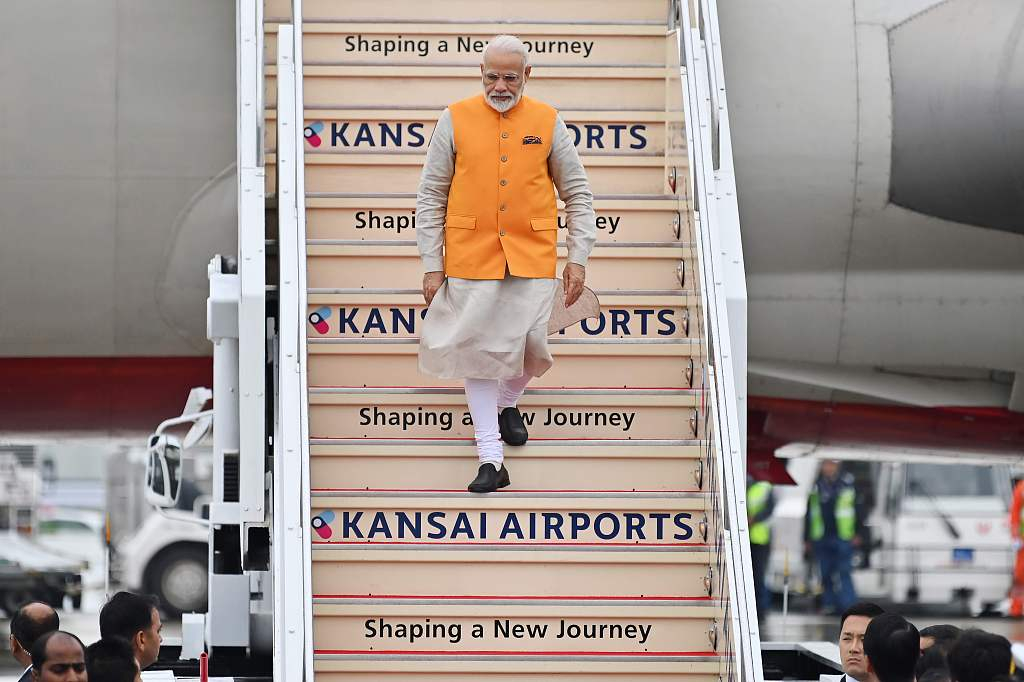
 Greenwash abounds. These same corporations announced the Alliance to End Plastic Waste with an initial commitment of $1-billion. In England, the environment secretary announced a phase-out of plastic straws by 2020 to “ensure we leave our environment in a better state for future generations.” Greenwashers literally grasp at straws. Canadian Prime Minister Trudeau just announced a phase-out of single-use plastic by 2021, while at the same time, approving the Trans Mountain pipeline expansion project. Stopping the production of plastic straws and single-use plastics is not enough. Plastic at the ocean’s surface releases methane and other greenhouse gases, and these emissions increase as the plastic breaks down further. “Microplastic in the oceans may also interfere with the ocean’s capacity to absorb and sequester carbon dioxide.”
Greenwash abounds. These same corporations announced the Alliance to End Plastic Waste with an initial commitment of $1-billion. In England, the environment secretary announced a phase-out of plastic straws by 2020 to “ensure we leave our environment in a better state for future generations.” Greenwashers literally grasp at straws. Canadian Prime Minister Trudeau just announced a phase-out of single-use plastic by 2021, while at the same time, approving the Trans Mountain pipeline expansion project. Stopping the production of plastic straws and single-use plastics is not enough. Plastic at the ocean’s surface releases methane and other greenhouse gases, and these emissions increase as the plastic breaks down further. “Microplastic in the oceans may also interfere with the ocean’s capacity to absorb and sequester carbon dioxide.”





























